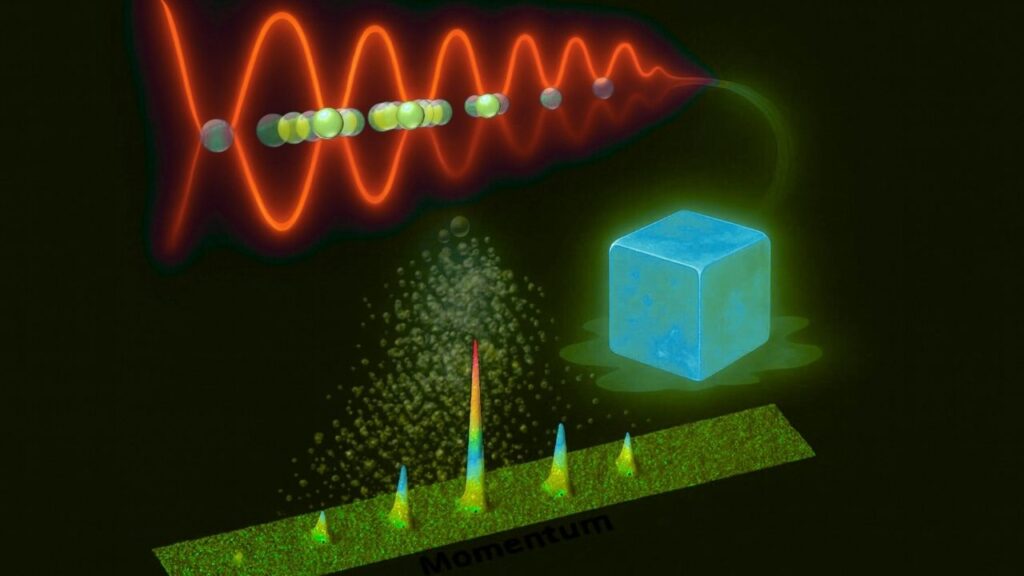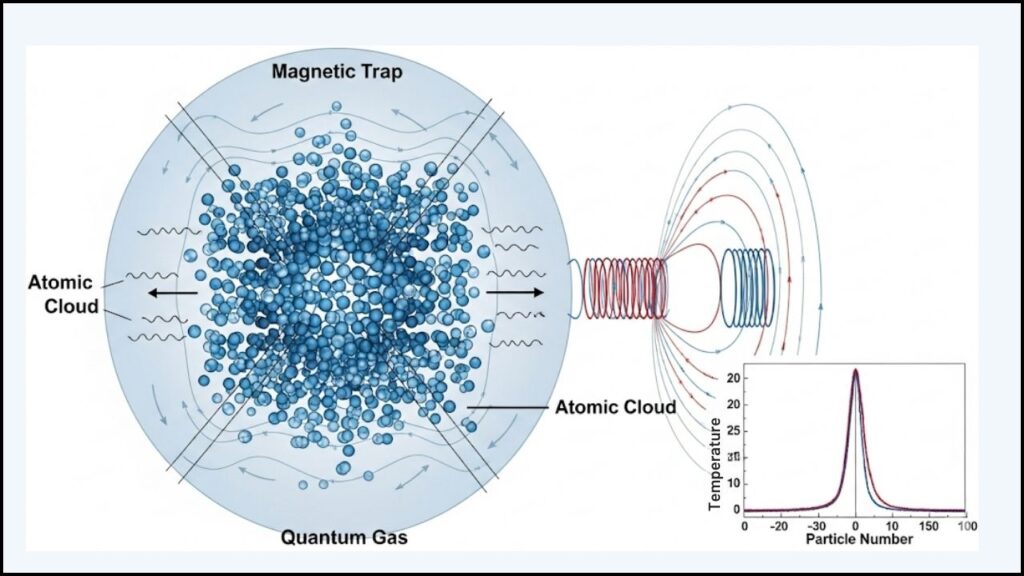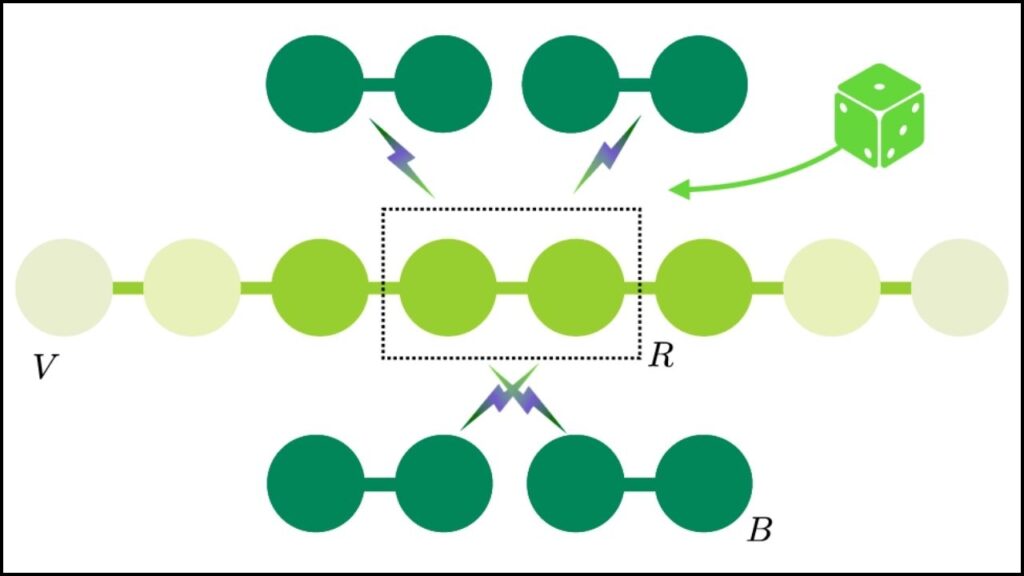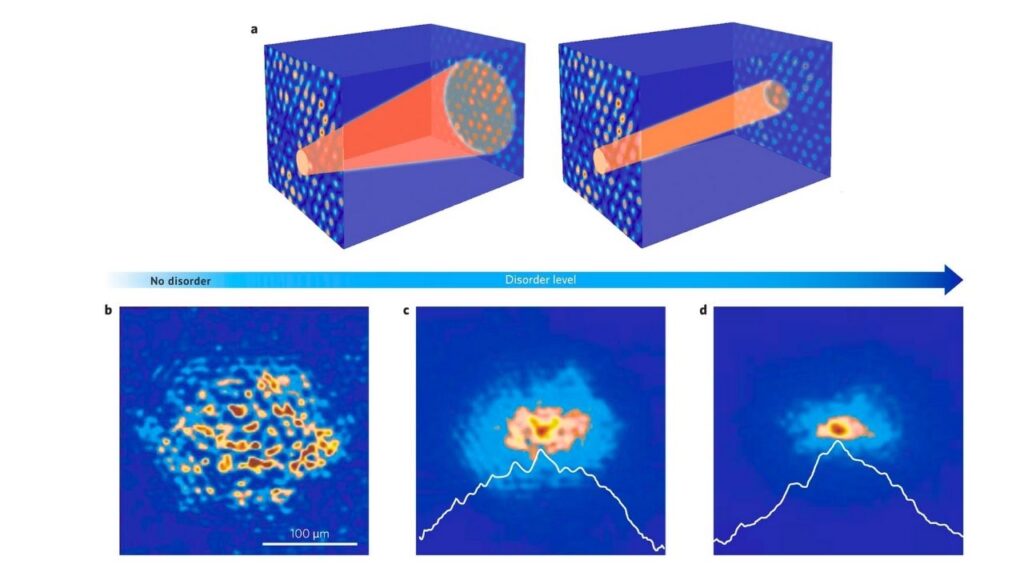In a groundbreaking discovery, physicists have observed a quantum gas that refuses to heat, even when exposed to continuous external energy input. This strange behavior challenges what we know about how matter absorbs energy and could reshape the future of quantum technology.

At first glance, the idea sounds counterintuitive. Normally, when you add energy to a system—whether it’s boiling water on a stove or charging your phone—it heats up. But in this case, scientists witnessed a system where, after an initial burst of heating, the temperature stopped rising and the gas essentially “froze” in its energy state. This remarkable effect is tied to many-body dynamical localization (MBDL), a newly explored phenomenon in quantum physics.
Table of Contents
Physicists Observe Quantum Gas That Refuses To Heat
| Aspect | Details |
|---|---|
| Phenomenon | Many-body dynamical localization (MBDL) |
| Discovery | Observed by researchers at the University of Innsbruck (2025) |
| System Used | Ultracold, strongly interacting one-dimensional quantum fluid |
| Energy Input | Rapid optical lattice “kicks” (laser-driven pulses) |
| Result | Momentum distribution froze, preventing further heating |
| Applications | Quantum computing, stable quantum simulations, nonequilibrium physics |
| Official Source | Science |
The observation of a quantum gas that refuses to heat is more than a quirky scientific result—it’s a window into new phases of matter and a step toward solving one of quantum technology’s greatest challenges: stability. By refusing to thermalize, these gases demonstrate a quantum resilience that could pave the way for breakthroughs in computing, sensing, and fundamental science.
What Exactly Is a Quantum Gas?
A quantum gas is not like the air around us. Instead, it’s made of atoms cooled to near absolute zero—a few billionths of a degree above -273.15°C. At these extreme conditions, atoms slow down so much that quantum effects dominate their behavior.
Imagine a group of dancers on a stage. At normal temperatures, each dancer moves freely and randomly, bumping into each other. But when cooled to ultracold temperatures, the dancers move in perfect coordination, almost like one giant “super dancer.” This is how a quantum gas behaves.

Physicists often trap such gases in optical lattices—structures made of crossing laser beams that form a grid-like “egg carton” for atoms. These setups let researchers test fundamental physics in ways impossible with ordinary matter.
Why Shouldn’t It Refuse to Heat?
In classical physics, adding energy always results in heating. For instance:
- A pot of water boils faster as more heat is applied.
- A car engine runs hotter as more fuel burns.
- Metals expand as they absorb energy.
So when the Innsbruck team continuously “kicked” their quantum gas with laser pulses, the expectation was straightforward: the gas should keep heating indefinitely.
But instead, after a short rise in energy, the system’s momentum froze. It didn’t matter how much additional energy was pumped in—the gas refused to absorb more. This is like repeatedly shaking a soda bottle only to find that, after a while, no more bubbles form.
The Science Behind Many-Body Dynamical Localization
This strange effect, called many-body dynamical localization (MBDL), occurs because of the interplay between quantum coherence and entanglement.

- Quantum coherence means particles maintain a “shared rhythm” of wave-like states.
- Entanglement ensures that particles remain deeply connected, so their behavior can’t be explained independently.
When combined under constant external driving, instead of diffusing energy, the system locks into a non-equilibrium steady state. In simple terms, it stops acting like a normal material and starts behaving like something entirely new—a frozen quantum state in momentum space.
This is different from Anderson localization, a phenomenon where disorder traps particles in physical space.

In MBDL, the localization happens in momentum space instead, creating a stable barrier against heating.
Why This Matters for Quantum Technology
This discovery is more than a physics curiosity—it could directly influence quantum computing and quantum simulations, both of which struggle with a major issue: decoherence.
When quantum systems interact with their environment or absorb excess energy, they lose coherence and start acting like ordinary systems. This “noise” ruins delicate quantum calculations.
By studying MBDL, scientists could learn how to design quantum devices that resist heating and maintain coherence longer. For example:
- Quantum Computers: Imagine processors that run complex calculations without losing accuracy due to overheating.
- Quantum Simulators: Stable models of materials could help design new drugs, superconductors, or batteries.
- Quantum Sensors: Devices resistant to thermal noise could achieve ultra-precise measurements.
In essence, a gas that “refuses to heat” is like discovering a natural cooling mechanism embedded in the quantum world.
A Step-by-Step Guide to Understanding the Discovery
Step 1: Create an Ultracold Gas
Researchers cooled atoms (like rubidium) to just a few nanokelvins above absolute zero.
Step 2: Trap Them in a Laser Lattice
They placed the atoms in an optical lattice, a grid created by lasers that confines and organizes the particles.
Step 3: Apply External Kicks
Using rapid, pulsed laser beams, they continuously pushed the atoms, expecting them to absorb energy.
Step 4: Watch the Unexpected
Instead of heating indefinitely, the atoms quickly reached a plateau. Their momentum distribution froze, signaling the onset of MBDL.
Step 5: Analyze the Quantum Rules
The team identified that quantum correlations and entanglement caused this energy freeze-out, keeping the system locked in place.
Broader Scientific Implications
This discovery doesn’t just advance quantum tech—it reshapes fundamental physics:
- Thermalization Challenge: It questions long-standing assumptions about how systems reach equilibrium.
- New States of Matter: Opens the door to identifying new non-equilibrium phases.
- Multi-Dimensional Research: Future studies may explore whether MBDL exists in 2D or 3D systems, or in other particle types.
Quantum-Inspired Math Sharpens Noisy Medical Images With Pixel-Particle Analogy
Breakthrough in Quantum Dot Technology Enables Passive Two-Photon State Generation
Scientists Freeze Quantum Motion Without Cooling — A Physics First
FAQs About Physicists Observe Quantum Gas That Refuses To Heat
Q1: What is many-body dynamical localization in simple terms?
It’s when a group of particles refuses to heat up under constant driving because their quantum properties lock them into place.
Q2: Is this effect permanent?
Not exactly. It can persist for very long times in controlled systems but could eventually break down in noisy or imperfect conditions.
Q3: Why is this important for everyday life?
While it may not affect your morning coffee, it could help build more stable quantum computers and better sensors, impacting technology across industries.
Q4: How is this different from superconductivity?
Superconductors stop electrical resistance, while MBDL prevents heating in momentum space. Both are unique quantum effects but operate differently.
Q5: Can this phenomenon be observed outside a lab?
Currently, no. It requires ultracold atoms and high-precision lasers only achievable in advanced physics laboratories.



















